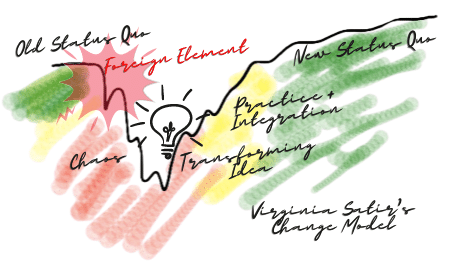As you know from earlier posts, poorly run, time-wasting, bad meetings peeve me.
I’ve read that improving the quality and productivity of meetings can improve productivity for the organization by up to 15%. When you consider that many people, especially managers, spend up to half their work week in meetings, improving team meetings seems a good investment.
Want to turn bad meetings into effective meetings? Start by calculating your meeting’s Return On Time Invested. Here’s how:
Step 1: Set up and explain the meeting rating system
If you want better meetings, gather data to focus your efforts. At the end of each team meeting, ask participants to rate their Return on Time Invested (ROTI) using this five point scale:
0 = Lost Principle: No Benefit Received for Time Invested
1 = A little better than 0
2= Break-Even:Received Benefit Equal to Time Invested
3= A little less than 4
4=High Return on Investment: Received Benefit Greater than Time Invested
Benefit can come from:
- Sharing information
- Making decisions
- Solving problems
- Planning work
Step 2: Build a histogram for each participant’s vote
As each participant states his/her rating, build a histogram that shows the results. It might look like this.
Meeting ROTI
4 |
3 ||
2 ||||
1 |
0 |
Step 3: Ask for more information
I’m happy if most people feel the meeting was a break-even investment. Still, there’s almost always room for a team to do better. Even if everyone rated the meeting at 4, it’s worth doing the next step to find out why the meeting worked well so you can repeat your success.
- Ask the people who rated the meeting 2 or above what specifically they received for their time investment.
- Ask the people who rated the meeting at 0 or 1 what they wanted but didn’t get.
- Then ask what specifically worked, what didn’t work, and for possible changes.
Step 4: Continuous Improvement
Next meeting you can make adjustment based on the data you’ve gathered.
Improving the Return On Time Invested in meetings can have a huge impact on both productivity and general sense of purpose among team members–no one wants to be stuck in ineffective, bad meetings after all.









0 Comments